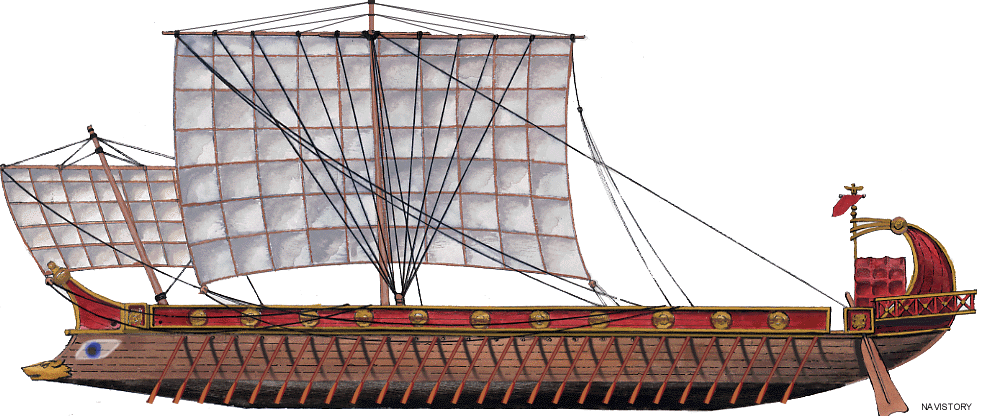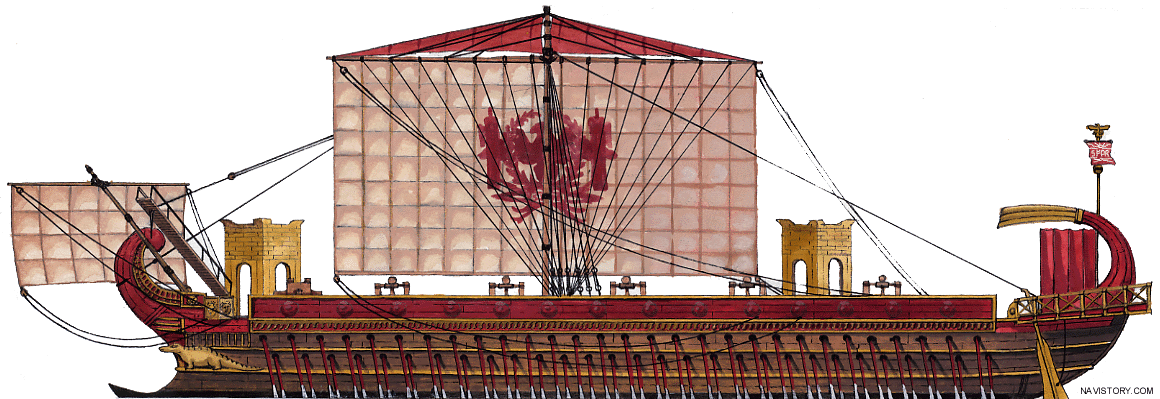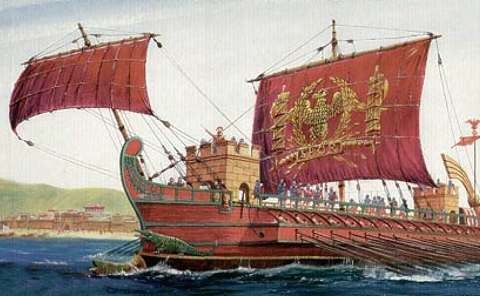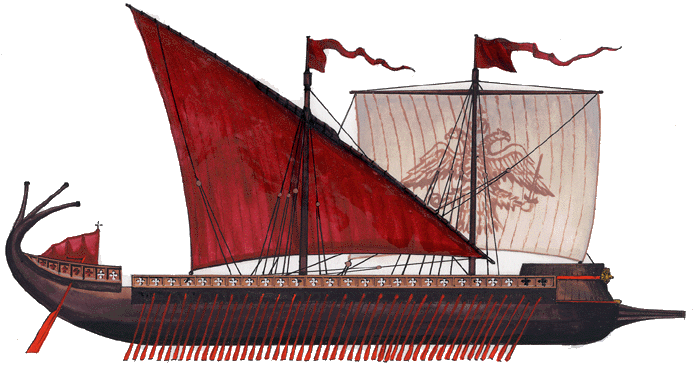1. Was Pentekonter the first warships Romans adopted? and did they commissioned Greek Colonies around them to build? did it becomes scout vessels very quickly and compared to Lemboi and Liburniae, did it becomes inferior to the two?
2. So should Bireme stood as Phoenician UU? since everyone else also use one too.
IMAO If there's Naval Scout in Civ6. Bireme should be one since it has been quickly relegated to this task once Trireme shown up and saw uses by everyone in Medit.
3. Is Quadrireme the first 'Multibanking' Polyreme? (One oar is worked by at least two men). what is the oarsmen configurations of Quadrireme when it first came to be? 2-1-1 , 2-2 or 4? (Four men works one oar)
4. Did Quinquereme becomes multipurpose warship in place of Both Quadrireme and Trireme? the Romans classified this as the 'Lowest of Heavyweights' and Quadrireme 'Top of the Lightweight class' or did 3 and 4 a part of Shock Units (both being relatively fast compared to the Five, and good at ram attacks while Quinqueremes are either boarders or tower ships (relatively large amount of archers) and being bad at rams? (so having smaller ram that is more of deco and less of a weapon? )
5. Did Octavianus also have Deciremes? didn't Hexareme the biggest he has, and instead he compensated his handicapped situations (of having much less heavy polyremes) with large amounts of light ships--Liburnia in particular.
6. did Liburnia replaced Trireme in the Imperial Era? or is it becomes 'Multibank Trireme' with 2-1 or 3 configurations? and did it eventually evolved into Dromon by the latter days of the Roman Empire?
First, remember always that Rome was never a 'naval power'. Like Russia, she was always focused on her army as the basis of her conquests and defense, and only went to sea when she had a very pressing reason.
Second, there is a language problem with finding the details of Roman ships. The Romans referred to all galleys (oar-powered ships) as
navis longa, or "long ships". Consequently, the Latin accounts rarely tell us what kind or size of galley they are talking about: except from context, they could be referring to anything from a pentekonter to a polyreme and rarely elaborate or provide details.
1. The Romans had no navy at all until 311 BCE, after they conquered Campania, the area that included Neapolis, or Napoli, a major port (and former Greek colony, hence the Greek name for the city). In that year they appointed the
duumviri navales ("two men to deal with naval matters"), their first officials with anything to do with the sea. They each commanded a squadron of 10 ships, but they weren't Roman, they were hired from the Greek city-states of southern Italy (and probably some from the newly-acquired Greek port cities like Neapolis). The date is far too late for Pentekonters as a major warship, so it is usually assumed that they were Triremes, but there is no direct evidence, either archeological or literary.
3. As far as we know the Quadrireme was the first multi-banked polyreme. The archeological evidence (for both the Phoenician bireme and the Phoenician/Greek trireme) indicates one man per oar on those ships, and Greek literary evidence provides no distinction among oarsmen except by the position of the oars - the three banks of oarsmen on a trireme each had a different title, but there is no indication of more than one man per oar or any word referring to a 'second' oarsman on an oar. The 'Marsala Ship' found off Sicily is the only ancient/classical polyreme wreck found so far, and it was a Carthaginian quadrireme from about 240 BCE. That ship had 2 banks of oars with 2 men on each oar, total of 280 oarsmen. Whether other configurations were used at other times or in other naval forces we just do not know.
4. The Quinquereme became the 'standard' heavy warship because, as I posted earlier, it was the first polyreme that was sturdy and stable enough to carry light 'artillery' - bolt or stone throwing catapults. It never completely replaced lighter ships, though: at Actium over half of the Roman (Octavian's) fleet were Quadriremes or Liburnians, and according to one source of the total in all three fleets (Octavian's, Anthony's and Cleopatra's) less than half were Quinqueremes or heavier ships.
5. Most Roman 'flagships' were hexaremes or Hexeris ('sixes'), and according to Pliny and Aelian were invented in Syracuse around 360 - 350 BCE, when Dionysius II of that city had one as his flagship. Several Roman fleets are also recorded with Hexaremes as flagships for the consuls as well as one of the Ptolemies of Egypt. Some accounts state that Octavian had nothing larger than a Hexareme at Actium, while others say his only Decereme was his flagship.
6. The Trireme was replaced after the 4th century BCE by several ships. In the Roman Imperial fleet, whose main opponents were pirates and other light craft, the Librunian became the warship of choice: fast enough to catch a pirate, heavy enough to outfight it. The Hemiolia appeared among the Greek states in the early 4th century BCE (360 - 380 BCE), which apparently (no pictures or examples have been found) was a Trireme with 1.5 banks of oars removed to make way for more marines, so that it was effectively a 3/4 Bireme. They had a slimmer and longer hull than a trireme or bireme, and so, according to accounts, were even faster than the other 'light' ships. The navy of Rhodes, one of the great naval powers of the Hellenistic eastern Mediterranean, developed the Trihemiolia, which was a trireme with half of one bank of oarsmen missing, a "two-and-a-halfer" if you will. From a relief sculpture it has been deduced that the hull was lower and lighter than the 'classic' trireme, so that it was as fast as the trireme but could carry more marines with only 144 oarsmen instead of 200+.
The Imperial Roman Liburnian was a bireme configuration that also used sails to augment the oars, was a cataphract, or fully-decked hull with a sharp pointed bow for more speed. At Actium Octavian's Liburnians were fitted with rams, but the later Imperial fleets apparently did not use them, since their main tasks did not involve fighting larger and slower warships, but lighter and faster pirates.






 elephant in the room.
elephant in the room. 